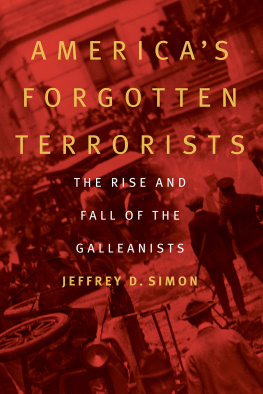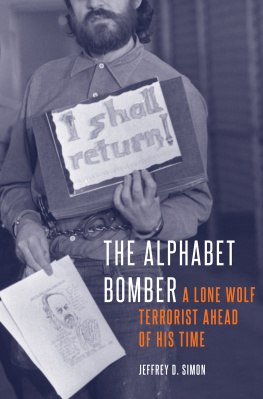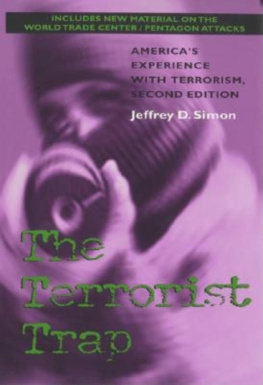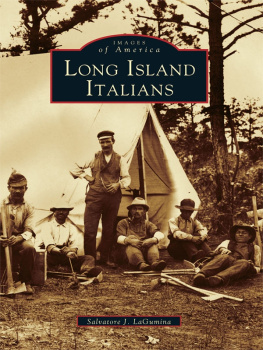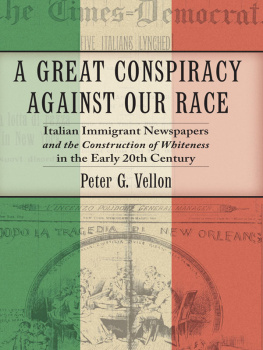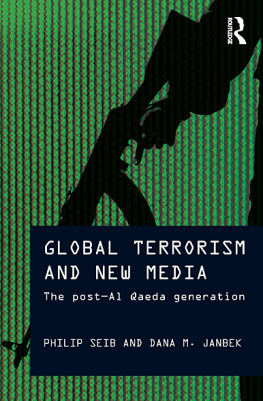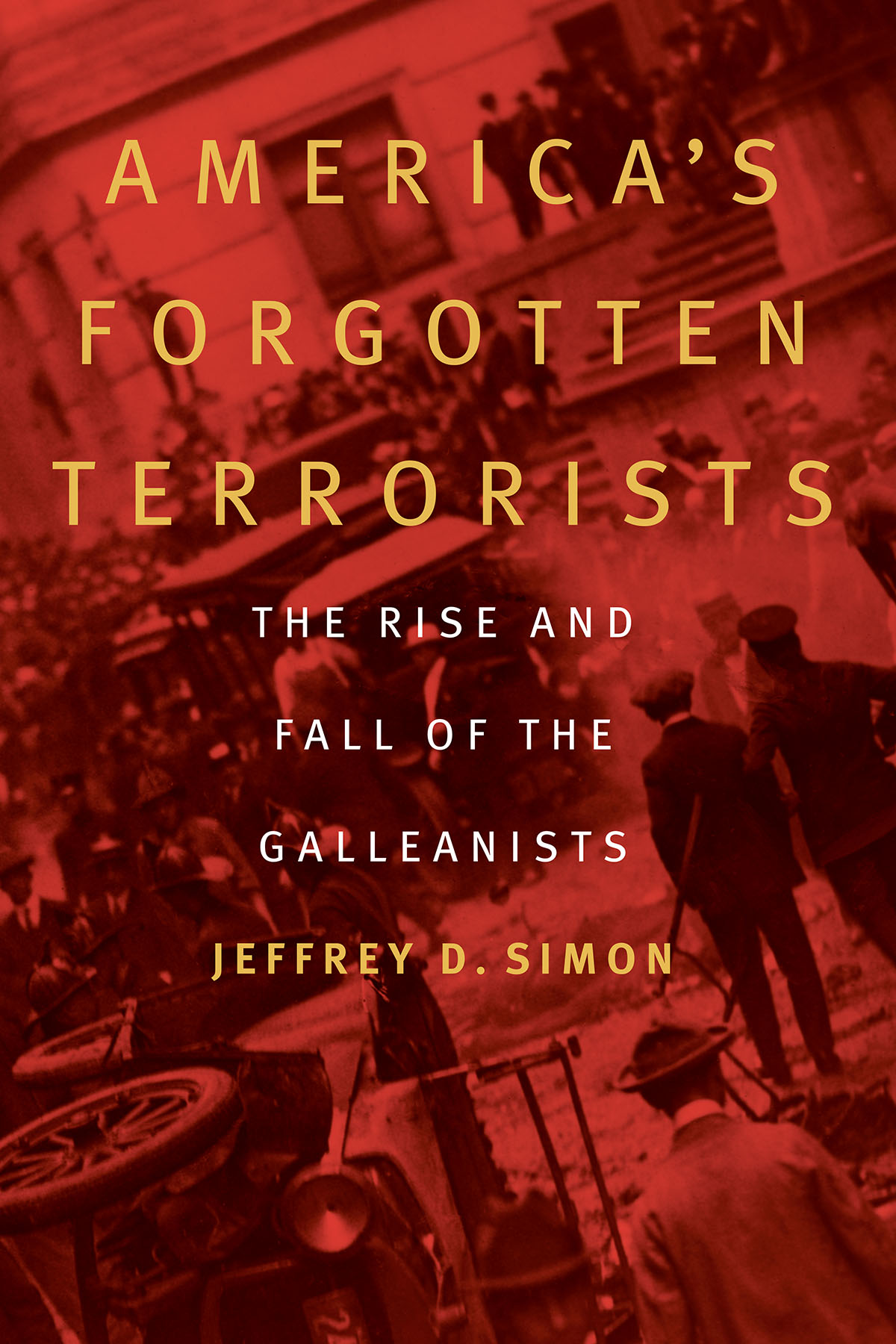
Americas Forgotten Terrorists tells the incredible tale of the Galleanistsand tells it well. Little known today, the Galleanists made headlines a century ago with dramatic acts of terrorist violence, recounted here in fascinating and often shocking detail. In doing so, they forced Americans to confront issues of civil liberties, inequality, immigration, and state power that still resonate today.
Beverly Gage, professor of history and American studies at Yale University and author of The Day Wall Street Exploded: A Story of America in Its First Age of Terror
Astute and valuable.... Simons book is a long-overdue examination of the Galleanists. It is a major contribution to the field of terrorism and an indispensable research gift for future historians.
Dennis Pluchinsky, former senior intelligence analyst in the Office of Intelligence and Threat Analysis, U.S. Department of State
This is a fascinating and compelling story of a little-known terrorist movement in which we find wisdom to navigate the terrorism of our times.
J. Reid Meloy, clinical professor of psychiatry at the University of CaliforniaSan Diego and consulting psychologist for the FBI s Behavioral Analysis Unit
A fascinating, comprehensive, and important account of the first global terror the U.S. experienced, the anarchists.
David C. Rapoport, distinguished professor emeritus at UCLA and founding and chief editor of Terrorism and Political Violence
Americas Forgotten Terrorists
The Rise and Fall of the Galleanists
Jeffrey D. Simon
Potomac Books
An imprint of the University of Nebraska Press
2022 by Jeffrey D. Simon
Cover designed by University of Nebraska Press; cover image is from the interior.
Author photo Kamran Behnam.
All rights reserved. Potomac Books is an imprint of the University of Nebraska Press.
Library of Congress Cataloging-in-Publication Data
Names: Simon, Jeffrey D. (Jeffrey David), 1949 author.
Title: Americas forgotten terrorists: the rise and fall of the Galleanists / Jeffrey D. Simon.
Description: Lincoln: Potomac Books, an imprint of the University of Nebraska Press, [2022] | Includes bibliographical references and index.
Identifiers: LCCN 2021037029
ISBN 9781640124042 (hardback)
ISBN 9781640125308 (epub)
ISBN 9781640125315 (pdf)
Subjects: LCSH : Galleani, Luigi, 18611931. | AnarchistsUnited StatesHistory20th century. | AnarchismUnited StatesHistory20th century. | TerrorismUnited StatesHistory20th century. | BISAC : HISTORY / United States / 20th Century | POLITICAL SCIENCE / Terrorism
Classification: LCC HX 843 . S 56 2022 | DDC 335/.830973dc23
LC record available at https://lccn.loc.gov/2021037029
The publisher does not have any control over and does not assume any responsibility for author or third-party websites or their content.
Contents
As any author knows, writing a book is a long journey. It begins with an idea for what might be a compelling story and then continues with the research and writing. There are many people I would like to thank for making this journey exciting, fun, and gratifying.
First, I am indebted to the incredible and dedicated people who work at archives and libraries around the United States. They were indispensable in helping with the research that went into telling the story of the Galleanists. These include the following: Haley Maynard and Cate Brennan (National Archives in College Park, Maryland); William Creech (National Archives in Washington DC ); Melissa Lindberg, Kelly Dyson, Frederick Plummer, Alexis Valentine, Courtney Matthews, and DeCarlos Boyd (Library of Congress); Lee Aura Bonamico (Aldrich Public Library in Barre, Vermont); Paul Carnahan and Margorie Strong (Vermont Historical Society); Andrew Rais (Vermont State Archives and Records Administration); Ruth Ruttenberg (Barre Historical Society in Barre, Vermont); Prudence Doherty and Chris Burns (Silver Special Collections Library, University of Vermont); Maria Avery (David W. Howe Memorial Library, University of Vermont); Tom McMurdo (Vermont Department of Libraries); Sue Walker, Elena Hirshman-Seidel, and Joe Coffill (Lynn Museum in Lynn, Massachusetts); Jessy Wheeler, Kim Reynolds, and Aaron Schmidt (Boston Public Library); Judith Maas (Massachusetts Historical Society); Christopher Carter and Elizabeth Bouvier (Massachusetts Supreme Judicial Court Archives); Gina Modero (New-York Historical Society); Joseph Scelsa (Italian American Museum in New York); Patrick Byrnes (Passaic County Historical Society in Paterson, New Jersey); Katie Levi and Ellen Keith (Chicago History Museum); Luke Meagher (Sandor Teszler Library Archives and Special Collections, Wofford College); Thomas White (Gumberg Library, Duquesne University); and Diane Mizrachi (Charles E. Young Research Library, UCLA ). The staff in the FBI s Freedom of Information Act division were also very helpful and provided the relevant documents and files I requested for this book.
My colleague Bennett Ramberg was an early and enthusiastic supporter of this project and offered valuable feedback and encouragement during our many discussions about the Galleanists, as did Martin Balaban, Phil Rothenberg, and Ted Zwicker. Nicholas Connizzo provided excellent research assistance regarding the years Luigi Galleani lived in Barre, Vermont. I am also indebted to Beverly Gage, J. Reid Meloy, Dennis Pluchinsky, and David Rapoport for reading the entire manuscript.
I would also like to thank the following colleagues, friends, and others who helped in many different ways: Annie Abbot, Athena Angelos, Eric Baldwin, John Barry, Theresa Hart Barry, Kamran Behnam, Mark Cacciatore, Eddie Chan, Shirley Chan, Ken Chin, Sandra Chin, Joe Cirillo, Gary Citrenbaum, MaryAnne Cliff, Reese Cuevas, Bob Cullum, Drew Cuthbertson, Mike Dash, Paul Heller, Mark Jacob, Steven Kafka, Eddie Kamiya, Janet Kamiya, Ken Karmiole, Ed Kobak, Rosanne Levin, James Lynch, Anthony McGinty, Sue Moran, John Mueller, Amy Goldberg Palacio, Niko Pfund, Adam Quinn, Silka Quintero, Margo Raines, Robin Hazard Ray, Alice Richter, Randy Roberts, Ed Rosato, Ken Ryan, William Flynn Sanders, Cyndy Foerstel Snell, Lorron Snell, Warren Spencer, Bill Teachworth, Kevin Terpstra, Griff Thomas, Donna Wald, Carole Wood, and Kenyon Zimmer.
Catherine L. Hensley of CLH Editing provided superb editing skills for the manuscript and, as usual, was a joy to work with. I would also like to thank everybody at Potomac Books and the University of Nebraska Press, especially editor Tom Swanson, for their enthusiasm for a book about the Galleanists. Thank you, as well, to copyeditor Joseph Webb and indexer Judy Staigmiller.
My incredible agent, Jill Marsal, championed this book from the beginning, and I am in her debt once again for her unwavering support. Nobody could ask for a better agent.
Finally, special thanks go to Ellen, Richard, Julie, Penya, Jack, Eric, Caleb, Oscar, Elijah, and Justine for being a very special part of my life.
It was all about the soup.
That is what the more than two hundred distinguished guests would remember from the banquet dinner on February 10, 1916, at the elegant University Club in Chicago. The occasion was to honor George Mundelein, the newly appointed archbishop of the city. Among the guests were the governor and former governor of Illinois, the former mayor of Chicago, bank presidents, judges, and Roman Catholic priests from around the country.
It wasnt long after everybody sat down that the chicken soup was served. Thats when the trouble began. Many guests became violently ill, clutching their stomachs and falling to the ground. Mundelein did not eat the soup and was thus not affected. But those that were, approximately one hundred diners, began throwing up. Unbeknownst to everyone, a chef at the club had put arsenic in the soup in an attempt to kill each person at the event. But hed miscalculated and put in too much, causing the diners to vomit it up, thereby preventing the poison from taking its full effect.
Next page
